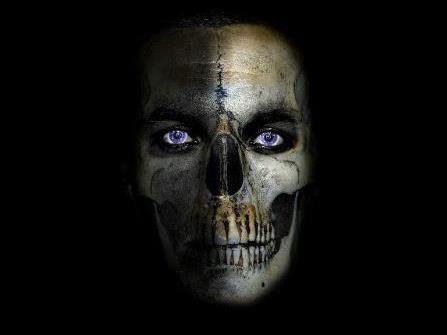Image: L.C. Nøttaasen via Flickr
Artists have always confronted death from ancient Egyptian funerary art to the memento mori of European Christianity. Death is a fashionable subject among contemporary artists too. Hobart’s MONA tags itself as the museum of sex and death. Sydney’s Casula Powerhouse recently held an exhibition focused on how we death and mortality; practically, emotionally, physically and psychologically.
But a new breed of contemporary artists is exploring some of the most difficult deaths, confronting the unpleasant details of murders with an unflinching forensic eye.
The director of Sydney Institute of Criminology Dr Rebecca Scott Bray believes art can be particularly powerful in helping people deal with death when it comes suddenly through violent crime.
Speaking during the Powerhouse Death exhibition, Dr Scott Bray, explored the rise of death salons, death cafes and even death drawing classes and the creative work of designers in dealing with the rising cost of dying, both financial and environmental.
‘Our relationship to death as a totality is changing quite considerably,’ she said.
She pointed to the recent hugely popular exhibition ‘Forensics: The Anatomy of Crime’ at the London Wellcome Collection met an interest that had been growing for some time in the relationship between art and crime.’
A starting point occur in 1992 when Luc Sante created Evidence, a book of crime scene photographs found in the New York City Police Department Archive. That prompted a ‘disgorging of forensic archives the world over’, said Scott Bray.
In Australia the NSW Justice and Police Museum held its first highly successful City of Shadows exhibition in 2005, displaying photography from the NSW Police forensic archive. Curated by Peter Doyle, the exhibition was repeated in 2013-14.
The ‘disgorging’ of forensic archives will continue in October when the Museum of London exhibits select items from the Metropolitan Police’s Crime Museum at New Scotland Yard to the public for the first time.
But the more recent work by forensic artists doesn’t just display crime scene images, said Scott Bray. Now forensic artists might still access information from archives and police reports but they are doing something ‘new with old information’, she said.
Scott Bray cites writer, historian and audio-visual artist Ross Gibson, who has written poetry to accompany images from the NSW Justice and Police Museum archive. ‘He’s created an interactive artwork with an artist called Kate Richards using some of his poetry. So you walk into this cavernous space and you’re surrounded by screens and basically the digital environment responds to you so the images kind of come at you depending on where you move in the room.’
Italian artist Eva Frapiccini’s work is centred on sites where terrorist crimes claimed the lives of thousands of people in the ‘70s and ‘80s in Italy. ‘She would research through the press and the archives; she would talk to police officers and magistrates from the time and also people in the neighbourhood and she went to the same place – the crime scene – at the same time of day and the same month that the original crime occurred and she took photographs of the site,’ explained Scott Bray. ‘She took them from different perspectives so sometimes you feel like you’re a bystander or a witness and other times you actually feel like a bit of a victim.’
London photographer Antonio Zazueta Olmos is another artist interpreting crime scene information. ‘He was horrified when he heard about a murder that had occurred just down the road from where he lived in London so he set out to document all the murders in London in a one-year period in 2012,’ said Scott Bray. He would find out via a site called Murder Map and blogs written by people in the community where crime scenes were and he would photograph them in the weeks or months afterwards.
Other examples include Stephen Chalmers’s photography of sites where serial killers dumped their victims; Angela Strassheim’s photographs of houses and their interiors sprayed with ‘Blue Star’ solution where homicides occurred in the wake of the global financial crisis and Melinda Hunt’s Hart Island Project.
At the extreme end of forensic art is Mexican artist Teresa Margolles who ‘physically works with the material in the dead body in her artwork,’ said Scott Bray, adding that he’s been working for years to highlight the political position of dead people in Mexico.
‘So Stephen Chalmers, Angela Strassheim they work with records to bring the dead to you in a kind of way but Teresa Margolles…she actually literally brings the dead body to the viewer.’
For instance, she has taken autopsy thread from 127 bodies that have been sewn and strung it across gallery spaces and she had a friend who was murdered and she had the floor on which he was killed dug up and it is exhibited in gallery spaces around the world. ‘She’s had the floors of galleries jack hammered up and she’s re-concreted floors with concrete that’s been mixed with water that’s been used to wash corpses in the mortuary so you are then sort of walking on the dead.’
‘In 2010 in Kassell in Germany she actually placed mud and blood-soaked canvasses around the museum so basically she goes to crime scenes and she takes these massive four metre by three metre canvasses and she drags them in crime scenes so they collect blood and mud and she then exhibits these. They are portraits really because when you are dealing with things like blood – that highly individual substance – so when it threatened to rain these canvasses threatened to bleed on the outside of the museum and cover the museum in the remains of the dead.’
‘She’s also put these canvasses in an irrigation truck where they’ve been moistened with water and she’s then had this truck driven along the highway between the US and Mexico, spraying this fetid water out onto the road.’
‘She’s actually been really aggressive about the use of her canvasses as well so when she represented Mexico at the Venice Biennale in 2009 she trespassed on the United States pavilion and she hung up these canvasses on the entrance to the United States pavilion because there’s been a lot of debate about the fact that it’s the fault in part of America that we have such a huge drug crime issue in Mexico.
‘She’s hung a mud and blood soaked canvas outside the front of the Mexican pavilion in Venice in place of the Mexican flag.’
‘What’s so interesting about her work is that her artworks are almost alive with the dead. They hiss, they crumble, they desiccate, they smell, and they weep in gallery spaces and in public spaces the world over,’ said Scott Bray.
‘I think that her work and the work of other forensic artists help us realise the different kinds of rituals around the dead that art can provide us with, and the fact that, sometimes you can actually think a lot more clearly, with greater focus, and a greater sense of reflection when you use art to talk about death rather than a strict legal record.’




